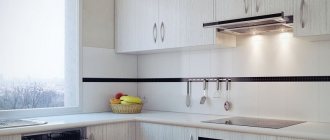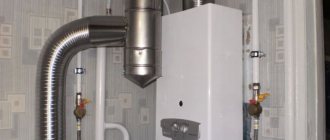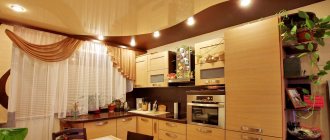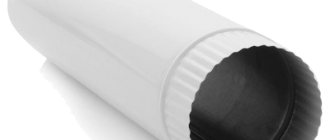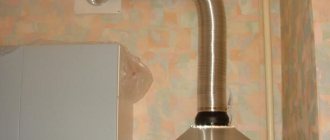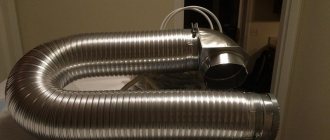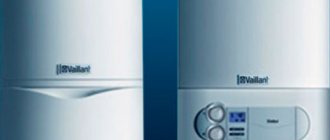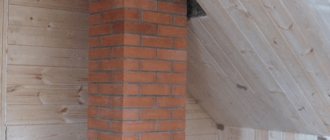For many people, the kitchen is perhaps the most important room in a house or apartment. Here they not only cook and eat, but also the whole family gathers, quarrels and makes peace, discusses news, and makes important decisions. In Rus', not just a room in the house was allocated for the kitchen, but sometimes even a specially equipped building.
A modern kitchen is a harmonious combination of beauty, practicality and technology. One of the important points in arranging a kitchen is the removal of odors generated during cooking. Kitchen hoods can handle this. We will tell you at what height to hang the hood above a gas stove so that it works properly.
Hood height above the gas stove: standards according to GOST
The correctly selected height of the hood above the hob ensures a long service life of the device, its operating efficiency and safety during use.
The installation height of the ventilation device depends on the following factors:
- type of stove - gas or electric;
- hood type;
- device performance;
- distance from the hood to the ventilation shaft.
Other factors such as the height of the user and the interior of the kitchen are also taken into account.
Based on calculations and for safety reasons, GOST established parameters for the distance between the exhaust equipment and the kitchen stove. These standards are displayed in the technical data sheet of each exhaust device.
Minimum and maximum distance, depending on the type of stove and hood
A gas stove is an open fire and an increased fire hazard, so the requirements for its placement are more stringent. The GOST standards for the height of the hood above a gas stove are as follows:
- Direct ventilation structures - dome, built-in, flat, corner. In them, the filters are located parallel to the surface of the furnace. Should be mounted at a distance of 75-85 cm from the burners.
- Inclined appliances in which the filters are located at an angle relative to the cooking surface. Location height – 55-65 cm.
Parameters for placing equipment over an electric stove (induction, halogen, simple with cast iron pancakes):
- Direct. The minimum height above the stove is 65 cm, the maximum is 75 cm.
- Inclined devices are mounted at a height of 35-45 cm.
For a comfortable cooking process, it is possible to change the height, adjusted for the power of the model, technical characteristics, kitchen design and user height.
Reference. The maximum permitted deviation from standard norms in both directions is 5-10 cm.
Inclined hood installation technology
The specifics of installing a hood in the kitchen with your own hands are usually determined by the model of the equipment and the type of hob. The use of heat-resistant materials in production allows the inclined unit to be mounted significantly lower compared to traditional series. In the case of an electric stove, the mounting height is 35 cm; for a gas stove, a minimum of 55 cm of free space must be provided.
Materials and tools
Basic tools:
- perforator;
- roulette;
- level;
- screwdriver;
- pencil.
You may also need:
- a section of corrugated pipe designed to remove exhaust air;
- fixing clamps that help connect the corrugated pipe to the air duct grille;
- grille - it is placed between the pipe and the ventilation duct.
When purchasing materials, you need to correlate the diameters of the grating and corrugated pipes. If the parameters match, it will be much easier to connect these parts, the joint area will be compact and neat.
Features of installing an inclined hood
After the installation height of the inclined hood above the stove has been determined, you need to make holes with a hammer drill in the places marked in accordance with the fastenings on the equipment body; at the same step, make recesses for the ventilation grille. During the installation process, it is worth using videos from specialists - it will be easier to navigate the stages and intricacies of the work. It is important that there is no hidden cable in the drilling area. Dowels are inserted into the finished holes, then self-tapping screws are screwed in.
To connect the hood to power, you need to insulate all contacts; you must first turn off the electricity in the apartment. After connecting the elements in accordance with the manufacturer’s instructions, check the functionality of the device and see if traction appears.
Installation of the corrugated pipe begins by connecting it to the grille: the section is put on the provided protrusion and secured with clamps. The free end is attached to the hood; the joints must be sealed using silicone compound.
To make the equipment fit more naturally into the interior of the room, it is recommended to use a decorative box that masks all connection areas. It is important to hide the corrugated pipe that goes to the ventilation duct.
A properly installed inclined hood can completely remove kitchen odors, fumes, fumes and grease fumes. To increase the effectiveness of the effect, you can leave the unit turned on at minimum power for a couple of minutes after the dish is ready.
How to correctly measure the distance from the stove and countertop with a built-in stove to the hood
When measuring the distance from the stove to the hood, the type of equipment is taken into account. Depending on the type of device, measurements are carried out as follows:
- Direct ventilation devices - dome, built-in, flat, island, corner, T-shaped. Measurements are taken from the stove to the filters.
- Inclined. The distance is measured from the surface of the kitchen stove to the lowest point of the ventilation equipment.
Having measured the height with a tape measure, use a level to transfer the straight line to the wall. This will be the lower limit of the hood, which is oriented towards when installing it.
Types of kitchen hoods
According to the principle of operation, existing hoods are divided into two types - direct-flow (flow-through) and recirculating. There are also combined models that support both modes. In direct-flow devices, air is forcibly drawn in, passes through a grease filter and is pushed out through the air duct into the vent. The grease filter protects the electromechanical part of the device, as well as the air duct, from excessive contamination, trapping particles of fat and related substances.
Recirculating models also draw air inside, where it is passed through filters and released again, now purified, into the kitchen. In addition to grease, they are additionally equipped with a carbon filter, which provides additional air purification and eliminates odors.
In addition, hoods may differ in other parameters. Depending on the installation method, the following devices are distinguished:
- wall-mounted are attached to the wall;
- hanging ones are attached to shelves or elements of a kitchen unit;
- built-in, respectively, built into kitchen furniture, they can be retractable.
In addition, by location, this equipment is divided into the following categories:
- corner models - installed in the corner of the room;
- island type - mounted above a gas or electric stove located in an “island” in the center of a large room;
- all others that are hung on the wall, built into furniture, etc.
In addition, there are dome (also known as fireplace) hoods. In essence, these are wall-mounted models, but with a characteristic dome-shaped body. There are also inclined models, in which the neck is inclined relative to the hob - it is believed that this design is more efficient.
Consequences of an incorrectly chosen location
The accommodation standard was not determined by chance. Any unauthorized change in distance entails unpleasant and even dangerous consequences.
If you hang the hood below the established norm, this is fraught with:
- overheating of the device;
- ignition of soot, dust, grease deposited on the hood filters;
- difficulty in cleaning the device;
- blocking the view of the hob.
Due to its low location, the user will often hit it with his head and hit it. The cooking process will become less convenient, especially for tall people.
Consequences of being too high:
- decreased efficiency, since a high-mounted device absorbs odors and combustion products worse;
- difficulties in servicing the device;
- Due to poor absorption of unpleasant odors, the user more often turns on the device at maximum power, which leads to noisy operation of the device and increased energy consumption.
Features of the kitchen hood
Models of exhaust hoods have significantly higher power - 200-1100 m3/h. This power is necessary to draw volatile pollutants generated during cooking into the air duct.
However, sellers of hoods state a different reason for choosing the power of an exhaust device - the need for frequent air exchange in the kitchen.
The hood duct installed above the stove is not responsible for air exchange in the kitchen. This device only removes volatile cooking products. Legend: A – removal of combustion products from the stove, B and C – direction of air movement during the air exchange process
Standards for mechanical ventilation actually require 10-12 air changes in the volume of the room served (SNiP 41-01-2003).
But the hood located above the kitchen stove does not perform the function of “room ventilation” because it is not capable.
Air in need of renewal (replacement) accumulates near the ceiling. The exhaust hood is not able to suck it into the ventilation duct - its socket is not set high enough. And the air flow during ejection and injection behaves differently.
The electromechanical installation draws air from a distance not exceeding the diameter of the suction socket. Those. with a hood hood width of 400 mm, air located no further than 400 mm from the socket will be drawn into it.
Meanwhile, the air flow is released over a distance exceeding 15 diameters of the exhaust opening.
A simple “home” example: a turned on household fan. On its back side, the air movement is barely noticeable, but on the front side there is a powerful air flow. By the way, the vacuum cleaner only works to suck up dust at a minimum distance from the carpet.
The only effective way to remove volatile cooking products is an independent ventilation duct. Otherwise, odors will remain in the house
The exhaust hood over the kitchen stove performs the only task - removing the air that comes to it from the surface of the hob.
Of course, in exchange for the pumped air, another portion of it will flow to the stove from a window, an open door to the next room, etc. But a complete change in the air volume in the kitchen will not happen.
If cooking odors rise to the ceiling, they will not participate in the mixing and will be difficult to remove.
For this reason, the instructions for range hoods contain the following conditions for placement and operation of the hood: 600 mm from the electric stove; 750 mm from the gas stove; Do not allow air flows (drafts) when the hood is operating, otherwise odors will spread throughout the room.
A stove hood does not provide air change in the kitchen. When choosing its model, the air volume of the room does not matter. The relationship between the size of the kitchen and the power of the exhaust hood was invented by sellers of kitchen appliances salons.
How to calculate the required exhaust power? Of course, based on the performance of the cooker.
When performing calculations for selecting a kitchen hood, the following factors should be taken into account:
